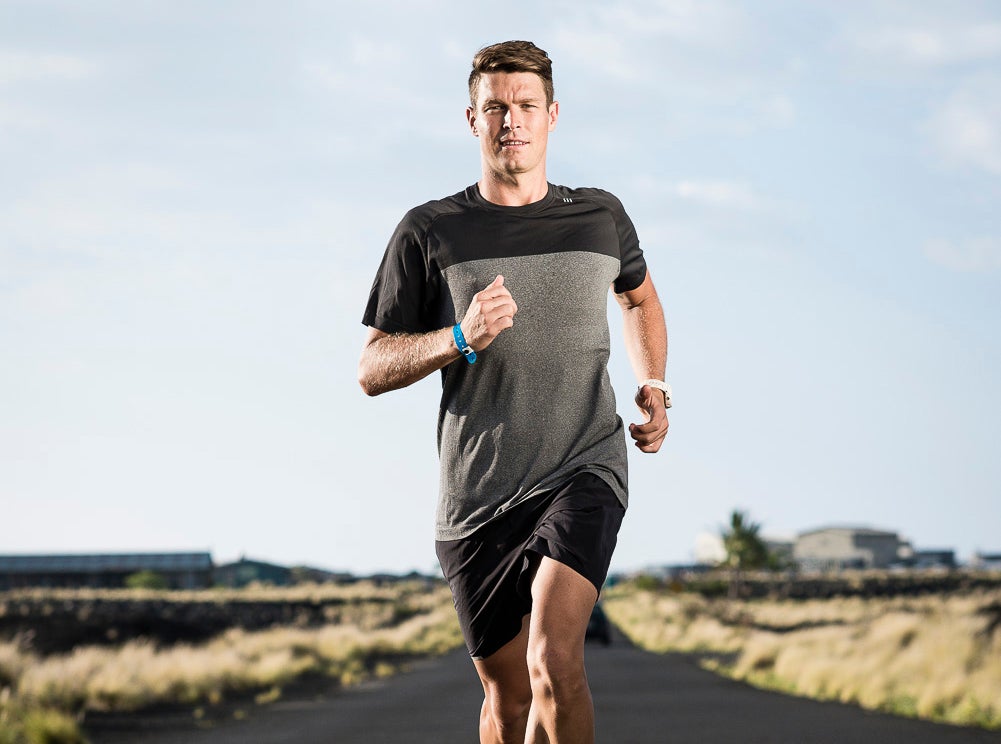How I Qualified: An Age Grouper Shares His Kona Journey

Travis McKenzie. Photo: John David Becker
A spot at the Ironman World Championship is the reward for a relentless work ethic and determined mind, but you can improve your odds of getting in by training—and racing—smarter. Take a cue from age-group triathlete Travis McKenzie, who punched his Kona ticket for the first time in 2014.
Travis McKenzie was exposed to triathlon as a kid in his native Australia, traveling with his dad, an Ironman athlete, to races. From about 10 years old, he’d spend his summers spectating at the races, often competing in any accompanying kids events. When his dad qualified for Kona and competed there in 1992, the McKenzie family traveled to the Big Island to cheer him on, and it sparked another triathlon dream. “I got to run down the finish straight with him, and in that moment I thought, ‘I really want to do this race someday,’” says McKenzie. “I looked up to my dad and guys like Mark Allen and Greg Welch, and I knew that one day I wanted to do that race.”
Despite an interest in multisport, McKenzie spent his teenage years playing Australian football and hoped to eventually turn pro. However, a series of injuries and circumstances led him to abandon the sport at 20, and he turned his attention back to triathlon, signing up straight away for Ironman Australia. “I was a bright-eyed 20-year-old but really naïve about what it really took,” he recalls. “Over the next few years I did three or four more Ironmans and in the back of my mind thought it would be great to qualify for Kona but didn’t really have the laser focus that it requires.”
In 2011, McKenzie broke his leg in a pickup football game, and used triathlon to get himself back into physical shape (ultimately dropping 60 pounds), with the goal of racing Ironman Arizona. “I used Ironman Arizona in 2012 as a life transformation—I really got back to fitness and health through Ironman,” he says. Slowly ramping up his training over the course of a year, he made it to the Arizona finish line in 9:57.
“Kona was still in the back of my mind but I never really thought it was possible,” says McKenzie, who works as a global events manager for Lululemon in Vancouver. “I started to get fitter, and in smaller races and in half-Ironmans I was finishing on the podium with guys who were going to Kona, and I started to believe it was possible. From there I just really dug into the things I needed improve on—my run is something that I’ve really worked on in the last few years—and I concentrated on nutrition and all the small details that take you from one level to the next.”
The goal last year was to qualify for Kona at Ironman Texas, but McKenzie, who averaged about 12 training hours per week, decided to race Ironman Melbourne beforehand as a training race. “I got to Melbourne and was feeling really good and had a strong race and ended up qualifying for Kona,” he says. He punched his ticket with a 9:06 finish on a course that played to his strengths (strong swimmer in rough water, flat and fast bike course for the power cyclist and a one-way run course for a self-declared “head-down, rhythm runner”).
A bike accident during a training ride last June threw a wrench into his training for Kona 2014 (where he still finished in 10:40) but McKenzie is determined to return to race on the Big Island. “Now, the motivation has never been higher to get back to Kona and keep going back because it’s just an extraordinary experience,” he says. “I know what it takes and I want to have the race I know I can have.”
Race Happy
Doing the physical work to prepare for a solid qualifying performance is of course important, but having a strong mental game is equally essential, advises McKenzie, who is self-coached. “For me in Melbourne, it was about being really happy and not feeling a lot of pressure on myself to do anything special,” he says. “I was going there to have some fun and catch up with family and friends, and I was really in a good place mentally. I was prepared for the race, but I wasn’t pressured. It was about being around people I love and care about and the joy of racing and competing that was special about that qualifying race.”
Self-belief is also paramount, he says. “A lot of the self-belief came from the training, just feeling like I was doing the work, but another part of it is having a good support network around you of people who are invested in your goal and dreams, whether that’s a training partner or significant other or even family members or colleagues. I have a great support system at work where people know I’m getting out in the middle of the day for a swim or a run and it’s not a question of why. It’s about not listening to the people who say it’s hard and you can’t do it.”
RELATED: Getting Into The Ironman World Championship
Qualifying Rules
McKenzie’s top tips for nabbing a Kona slot.
1. Consistency is key.
“Instead of training 25 hours one week and then zero hours the next, you’re better off doing two weeks of 12.5 hours.”
2. Be patient.
You’re probably not going to improve massively in six months to a year; it’s going to take 2–3 years, he says, “so be committed to the process and patient with it.”
3. Keep it fun and social.
“It’s not work for most of us and shouldn’t feel like a chore. It should be something you look forward to doing.”